Back to The Discus.com Learning Center
Back to The Discus.com Learning Center
Let’s put this intestinal worm business in perspective.
If you’re new to the hobby or even been in it for a while one of the great dangers you and your fish will face is Mis-information. And I can think of no greater area to be concerned about than the nonsense information generally being passed around dealing with intestinal worms.
I speak here primarily of the misguided over use of medication of discus fish for tapeworms and the old wives tale that if you feed a beef-heart formula you are feeding your fish tape worm cysts.
I will go on record here, Few discus fish will ever require treatment for tapeworms. It’s just not necessary. And should the case arise it certainly will not be from feeding the fish beef heart.
When someone tells you to medicate for tapeworm you should automatically assume that that person does not know what he or she are talking about. Such advice must be taken with not a grain of salt but an entire box full. Unless and until a microscopic examination proves the presence of a tapeworm don’t even worry about it.
Intestinal worms are perhaps the most misunderstood areas in our hobby today. Day in and day out you surf the web to talk forums about not just discus fish but most other tropical fish types and read endless chit chat and advice being given by those who have no concept of the actual facts about worms that infect fish or when or how to treat them. Yet here they are, giving you bum information that can damage or kill your fish.
WORMS IN THE BODY CAVITY AND INTESTINES OF AQUARIUM FISHES
We need only be concerned with two general types or orders of parasitic worms in our fish. Cestode, There is about 1500 hundred species. And all these species are parasites. The second group or order is Nematode worms. This group is commonly referred to as round worms. This order contains more then ten thousand species of free living and parasitic thread like animals.
WORMS ARE INDEMIC TO FISH AS A NATURAL STATE
All fish have worms in the their systems in one way or another. It is a natural state. Most are parasitic and affect the host in one way or another throughout the lifetime of the fish. It is only when they are able to multiply in such numbers due to a weakening of the fish that they become a menace to the life of the host. Parasitic worms are found in three main areas of the fish’s body. ( A ) The gills. ( B ) The fish’s body cavity, which includes the intestines and other vital organs ( C ) The meaty tissue of the fish. In most cases when worms are found in the meaty tissues it is in the form of a cyst or larval stage. However some worms are capable of attacking the tissue directly as adult parasites.
THE DIGESTIVE TRACT
The function of the digestive tract is absorption of three major types of nutrients and water. Well that sounds simple enough, but if you were to understand parasitic worms and pathogens perhaps a little information about this process would be helpful.
First the food is masticated to some extent by the teeth although in a fish it would appear that the teeth primarily hold the food just before it is swallowed since few fish have teeth designed for ripping or tearing of solids. Fish have stomachs, which produce hydrochloric acid and digestive enzymes.
In the fore-gut, bile and pancreatic enzymes — lipases, anylases, trypsin are released which emulsify and reduce fats to smaller fatty acids and simple sugars and proteins to amino acids all of which are then absorbed across the intestinal mucosa.
Of course when parasites of any type enter the picture the entire process is caused to go out of balance and the fish’s health will start to become effected.
THE FIRST STEPS OF DIAGNOSIS
Before we give our attention to specific examples of parasites it is important to remind ourselves of some general principles that can effect the degree to which such parasites will become a problem. First, in nature, it is rare to find any fish species which is parasite free. Fish almost always carry a parasite or a population of them without apparent signs of disease. Most have developed a system of immunity to a given parasite.
A PARASITES LIFE IS NOT EASY
The life of an intestinal parasite is not an easy life. First, they must live in an acidic environment with the fishes immune system attacking them their entire life. Second, while some parasites can be transferred by direct extension through the water, over crowding will increase the chance that a host will be found. However, most parasites require a second or third intermediate host. For example, free-living invertebrates such as Daphnia and Cyclops, which in turn are eaten by other fish, or snails that eat nematode eggs passed from fish. If such intermediates are not found in the aquarium system transmission is impossible. It should be remembered also that when a fish dies it should be removed as quickly as possible from the tank since your other live fish will eat the dead one and acquire the still viable parasites in this way.
In any fish disease situation, one must begin with the history of the fish in question. Also, before establishing a diagnosis of parasitism, one must initially exclude other problems by reviewing basic aquarium practices such as water quality management, nutrition, and the possibility of noninfectious problems.
PARASITES, INCLUDING WORMS, DON’T APPEAR BY MAGIC THEY ARRIVE FROM SOMEWHERE
Generally form other fish or food present to a disease state. The general rule of quarantining all new arrivals should be automatic. New fish and plants should never be added with out being quarantined for at least three to four weeks. The longer the better for safety sake. The parasitic worms you will encounter will be roundworms; it will indeed be rare to find a flat worm such as a tapeworm in discus or other tropical fish. Feeding tubifex and black worms or any type of live worms as food will increase your chances of importing disease factors to your tanks. While I do not believe that these live worms are carriers of tapeworms, they can be the hosts for many bacterial disease parasites which is easily avoided by the use of—-
BEEF HEART
You will hear that beef-heart contains the parasite tapeworm. This is possible for a tapeworm that would effect cattle. But since parasites are generally host specific it is highly unlikely that even if tapeworm cysts could be found in beef-heart (which is very doubtful to start with) it would not be able to infect fish. There has never been a documented case of tapeworms being transferred from beef-heart to fish of any kind. Yet you will be told this is happening in Discus. When you hear such garbage I would demand some documentation or proof of such an event. While beef cattle are fed foods that have a hormone content this does not seem to be a factor in the culturing of discus. It has no effect on the breeding process in these fish.
While you will find that certain infections of round worms occur in all fish they can become a disease problem of major proportions and should be treated only if they are effecting the general health of the fish in question. Otherwise it is best to let the natural immunity of the fish deal with the problem.
REMEMBER PARASITES DO NOT APPEAR BY MAGIC THEY
ARE INTRODUCED IN SOME MANNER
PREVENTION IS THE BEST ANSWER TREATMENT IS THE LAST RESORT.

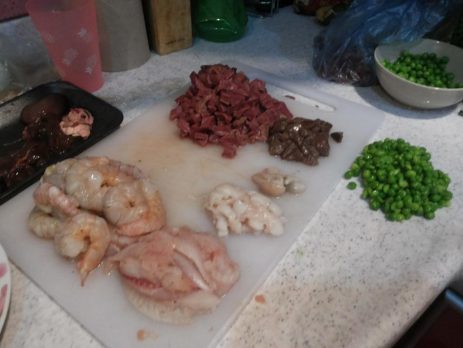
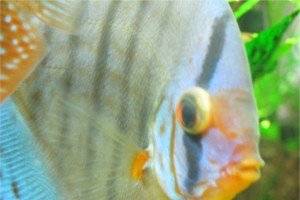
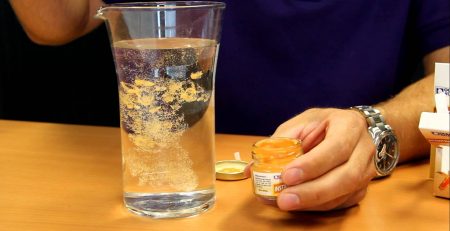

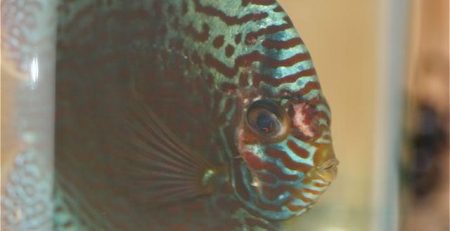



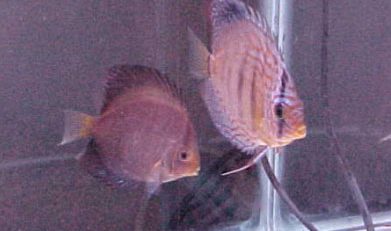

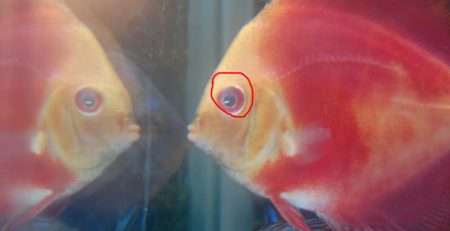
Leave a Reply
You must be logged in to post a comment.